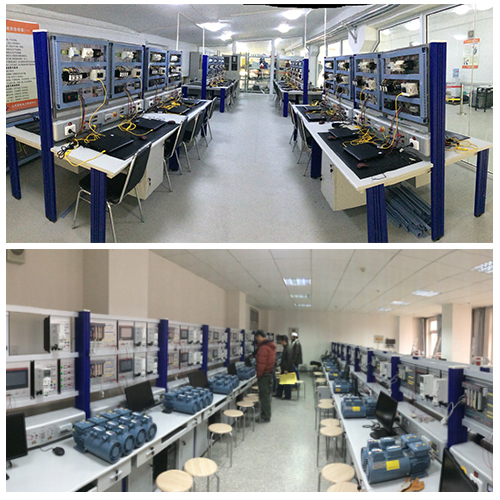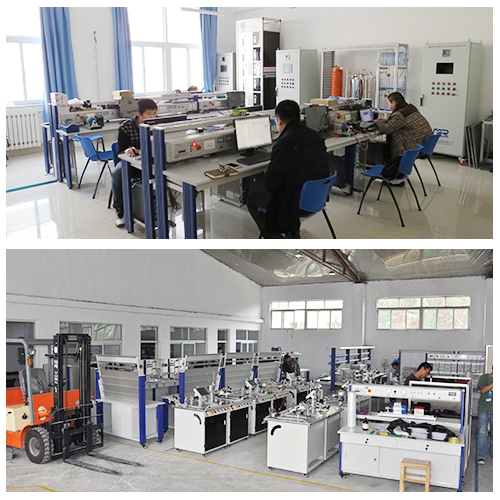MR1051 Saturation Pressure And Throttling Fluid Mechanics Experiment Equipment School Laboratory Equipment Educational
I.Product Overview
1.1 Overview
Saturation Pressure Experimental Equipment is designed to help students understand and understand the characteristics of saturated water vapor in thermodynamics, that is, to study how the boiling point temperature of saturated water changes with the change of pressure.
saturation pressure test equipment is mainly composed of a boiler, a rectangular ring pipe and a variety of sensor instruments. The boiler has a built-in cartridge heater, which heats the pure water in the boiler to boiling point. The boiler is also equipped with a special glass window that can withstand the experimental pressure, and the state changes during the heating and cooling process of pure water can be observed. A rectangular loop of tubing enables the saturated steam leaving the top of the boiler to pass through a loop of tubing before condensing and returning to the bottom of the boiler for reheating. The maximum pressure allowed for the boiler and ring piping is 7 bar.
The rectangular loop pipeline of saturation pressure experiment equipment is equipped with temperature sensor, pressure sensor and pressure controller, which are used to measure the characteristics of saturated steam. The upper end of the annular pipeline is also equipped with a water injection port and a filling valve. Pure water can be added to the boiler through the water injection port and the filling valve can be closed to close the annular pipeline to pressurize and discharge the air in the pipeline to reduce experimental interference factors. . Other pipelines connected to the annular pipeline are equipped with isolation valves, temperature sensors and throttling calorimeters, which are used to measure the characteristics of the saturated steam passing through the throttling calorimeters, so as to determine the dryness fraction of the saturated steam. Saturated vapor is passed through a throttling calorimeter into a vapor retention condensation labyrinth where the vapor is reduced to atmospheric pressure and condensed to a liquid state, collected in a cup under the labyrinth.
1.2 Features
(1) The overall scale of saturation pressure experimental equipment is small, no assembly required, plug and play. The experimental environment is allowed to be changed at will, and the teaching experiment can be completed in a short period of time.
(2) In the design of saturation pressure test equipment, many anti-corrosion materials are used to prolong the service life of the equipment.
(3) The software compatibility of saturation pressure experimental equipment is high.
II.Performance Parameter
Input power: AC 220V/50Hz
Heating power: 1kW
Weight: <50kgs
Size:700*580*630mm
Working conditions: ambient temperature -10℃~+40℃; relative humidity <85% (25℃); maximum allowable working pressure: 7bar
III.Components List and Detailed Introduction
3.1 Main part

Number Name
1 Boiler
2 Rectangular loop pipe
3 Temperature Sensor
4 Water inlet
5 Filling valve
6 Safety valve
7 Pressure gauge
8 Isolation valve
9 Heater
10 Pressure controller
11 Special pressure-resistant glass window
12 Drain valve
13 Vapor condensation maze container
14 Condensate collection container
15 Structural support
16 Acrylic shield
3.2 Power box part
Number Name
1 Touch screen
2 Load switch
3 USB interface
4 Breaker
5 Aviation socket 1
6 Aviation socket 2
3.3 Equipment configuration list
Number Name Quantity
Component 1 Boiler 1
Component 2 Temperature Sensor 2
Component 3 Pressure Sensor 1
Component 4 Pressure controller 1
Component 5 Pressure gauge 1

Component 6 Heater 2
Component 7 Touch screen 1
Component 8 Load switch 1
Component 9 Breaker 1
Component 10 Condensate collection container 1
3.4 Accessories
Number Name Quantity
1 USB data cable 1
2 U disk 1
IV.Experiment List
Experiment 1 Characteristic behavior of two-phase fluid
Experiment 2 Measuring principle of saturation pressure
Experiment 3 Concept of Saturation Line
Experiment 4 Steam Table
Experiment 5 Use of steady flow energy equation

